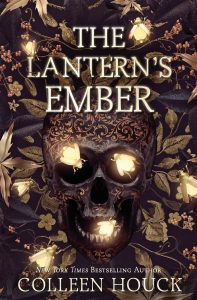 Five hundred years ago when Jack was only a boy, he negotiated a deal with a pirate from the Otherworld who separated his body from his soul and sentenced him to the life of a lantern. As a lantern, Jack straddles the world of the living and the dead and guards the crossroads between the mortal world and the Otherworld.
Five hundred years ago when Jack was only a boy, he negotiated a deal with a pirate from the Otherworld who separated his body from his soul and sentenced him to the life of a lantern. As a lantern, Jack straddles the world of the living and the dead and guards the crossroads between the mortal world and the Otherworld.
In his fairly monotonous job, Jack maintains a sense of balance between the two realms. Although most of the time he lives a sleepy existence, he has done everything from exporting entire herds of gremlins to clearing caves full of werewolves. Once, he even single-handedly evicted a nest of half-breed vampires from an underground necropolis.
His favorite pastime, however, is watching over and keeping safe Ember O’Dare, an independent and determined young witch who is drawn to the Otherworld. But only one witch is permitted there. As the Lord’s wife, this high witch is the provider of all the magical energy in that realm. Because any other witch visiting the Otherworld would be in dreadful danger and her presence would cause the two worlds to blend, Jack dissuades Ember from attempting to cross over, not only for her own protection but to preserve the precarious boundaries.
When she is seventeen, Ember is lured by Deverell Blackbourne, a vampire with selfish desires who offers to escort her to the Otherworld. Upon his discovery that Ember is missing, Jack engages the help of Finney, a mortal boy with an inventive mind and an amorous interest in Ember, to rescue her and return her to her home in Hallowell.
On their ensuing search, the pair encounter a variety of macabre creatures—from trolls and reanimated corpses to blackguards and diabolical geniuses. With multiple parties interested in securing the natural-born, extraordinarily powerful witch for their own purposes, the dangers escalate and the manipulations ensue.
Besides its rich allusions to “The Legend of Sleepy Hollow” by Washington Irving, Colleen Houck’s book The Lantern’s Ember shares some interesting lore about the origin of Halloween as well as some facts about life, namely that:
- Our witchlight—our soul, power, and spirit—is worth protecting.
- Despite fear’s ability to make a shark out of a minnow, we should not allow fear of the unknown to prevent us from discovery.
- “Places like the oceans or the heavens, an undiscovered forest, a great underground chasm, or the mystery of a woman’s heart and mind are not the end of a journey, but a beginning” (208).
- If we hoard our power or hold back our hearts and give nothing of ourselves, we can never be whole; we have to willingly offer our hearts to be at peace.
- Choosing to use one’s powers to unite and to heal often has greater impact than to steal souls who have bargained away their right to one through their own evil actions. After all, “it always takes more energy to join and build than to destroy” (277).
- “Those who are the most brilliant—men who wish to help others and make the world a better place to live . . . are often those who either toil unseen or are branded as diabolical. The line between greatness and villainy is as thin as a garrote wire” (301).
With her novel, Houck also provokes readers to consider: “If you held the very key to everlasting life in your hand and the door stood before you, ready to open and reveal all the secrets of the eternities, would you be brave enough to unlock it and step through?” (273).
This convoluted, supernatural adventure is filled with plot twists to delight and surprise readers of ghost stories, the Twilight saga by Stephenie Meyer, and the Shiver trilogy by Maggie Stiefvater.
- Posted by Donna

